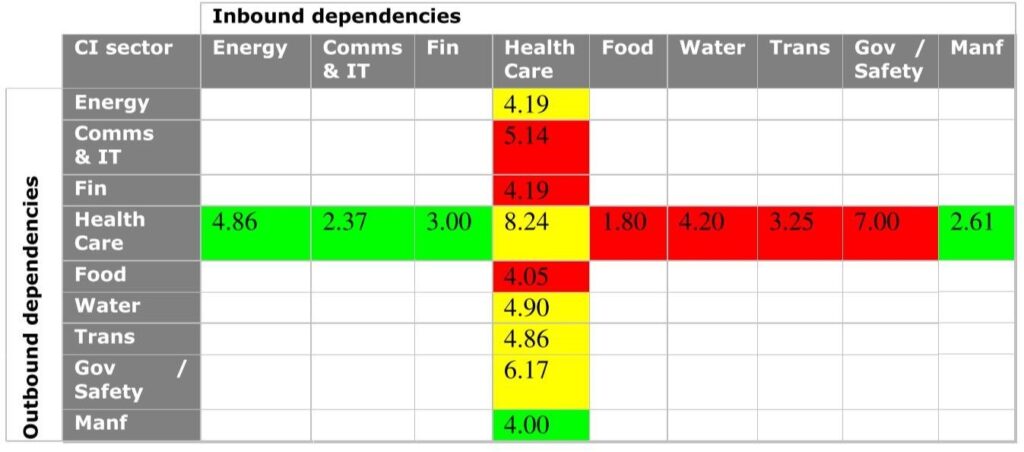
There was a lot learned from SARS. The after action reports pointed fingers at the federal, provincial and local health practitioners about how unprepared they were. The Health Sector took this seriously and held national Critical Infrastructure Pandemic Planning workshops and implemented changes to be more prepared for any future infectious disease outbreaks.
As the Water Sector Chair at the time I was afforded the opportunity to meet some very smart people in the industry and in each of our 10 Critical Infrastructure Sectors. Canada’s Water Sector became very proactive in planning and preparing for a pandemic situation.
Unfortunately, other Sectors were not as successful coordinating public and private entities.
I ended up contributing to a white paper by Tyson Macaulay for Public Safety Canada titled, Critical Infrastructure (CI) Interdependency Pandemic Case Study. The paper was a case study used to apply CI interdependency metrics and analysis algorithms to the Health Sector under pandemic conditions.
The scenario for this was based upon a pandemic from a novel avian flu strain which was being tracked in Asia that obtained a foothold in North America. Initial quarantine measures were applied too late or ineffectively and fatalities occurred as the spread of the disease remained unchecked, or at least could not be said to be under control.
Historical data was collated, after action reports reviewed, and interviews from public and private sector executives performed. The following is derived from a portion of the paper;
“While each metric-set independently provides new insight into how CI sectors interact and rely upon one another, together the correlated metric provides a strong indication of CI sector interdependency. The analysis within this Pandemic paper is based upon a sub-set of these findings related to the Health Sector.”
“From this guidance we can see that the U.S. Health sector is considered by DHHS dependent upon the following CI sectors to a significant degree during a pandemic situation:”
- Safety and Government
- Energy
- Water
- Transportation
- Communications and IT
“A further significant observation from the DHHS Flu Plan was that pandemic will likely impact CI sectors because of the requirement “to divert flow of critical infrastructure supplies and materials that normally transit through quarantined areas”, implying that the Transportation sector especially could face further disruptions not only related to staffing but also the availability of physical infrastructure.”
The Public Health Agency of Canada (PHAC) has acknowledged the role of critical infrastructure in pandemic response, but like the DHHS it is limited to discussions of how to allocate vaccines to critical infrastructure workers in the event of a pandemic.
The following is a derivative of the CI Dependency matrix developed in Macaulay’s book; Crtitical Infrastructure:understanding its component parts, vulnerabilities, operating risks, and interdependencies and contains only the Health-related dependency metrics and the assessed risk from this case-study.

“The columns of the above Table represent the Inbound Dependency metric for a given sector, where “Inbound” refers to the level of assurance required by a sector in the goods and/or services supplied by another sector. The rows represent the Outbound Dependency metric for a given sector, where “Outbound” refers to the level of assurance other sectors places upon the goods and/or services supplied by a given sector.”
“Metrics are on a scale from 1 to 10 as derived through correlation of quantitative econometric analysis and qualitative executive interviewing, and represent Inbound or Outbound dependency under normal operating conditions.”
“The colours in the cells represent the assessed risk around these dependency relationships when a change occurs from normal operating conditions to crisis conditions, with Pandemic being the crisis under consideration.”


